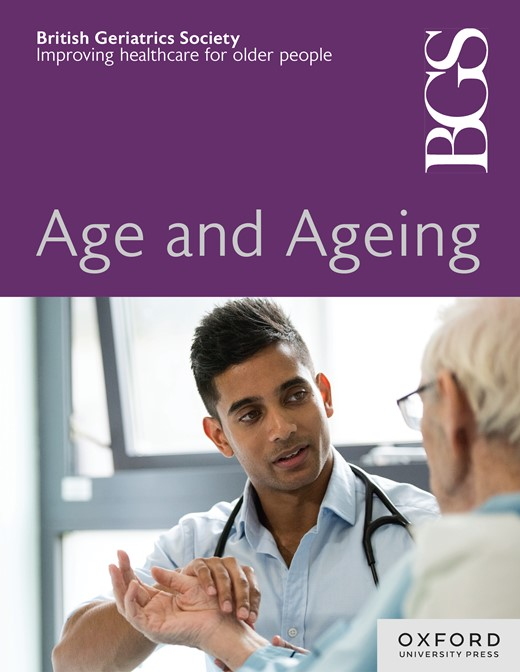围手术期认知训练对老年全髋关节置换术患者术后谵妄的影响:一项前瞻性随机试验
IF 6
2区 医学
Q1 GERIATRICS & GERONTOLOGY
引用次数: 0
摘要
目的探讨认知训练(CT)对老年全髋关节置换术患者术后谵妄(POD)的改善作用。方法本临床试验于2023年2月18日至7月10日进行,患者年龄为60-79岁,在全身麻醉下接受选择性全髋关节和膝关节置换术,手术时间≤3小时。排除术前有认知功能障碍和痴呆的患者。将CT组与常规护理组(RC)的POD发生率作为主要观察指标进行比较。次要结局包括不良事件、术后48小时内疼痛和POD特征。结果本研究将122名个体分为两组。POD的总发病率为8.2%(10 / 122),两组间无显著差异(CT组9.8% vs RC组6.6%;P = .509)。两组间的次要结果也无显著差异。CT组培训时间较短,依从率较低(4.0%)。尽管如此,结果显示,在不同的CT亚组中,POD发生率存在显著差异,并且在持续时间小于中位时间12分钟的CT治疗与POD发生率之间存在显著相关性(P = 0.043)。结论CT不能减轻老年全髋关节置换术患者POD的发生率。由于POD仅在CT次数较少的患者中观察到,这表明依从性推荐的CT次数可能有助于POD。本文章由计算机程序翻译,如有差异,请以英文原文为准。
The effect of perioperative cognitive training on postoperative delirium in older patients undergoing total hip and knee arthroplasty: a prospective randomised trial
Objective This study investigated whether cognitive training (CT) ameliorates postoperative delirium (POD) in older patients undergoing total hip and knee arthroplasty. Methods This clinical trial was conducted from 18 February to 10 July 2023 and included individuals aged 60–79 who underwent elective total hip and knee arthroplasties with surgery durations ≤3 hours under general anaesthesia. Patients with preoperative cognitive dysfunction and dementia were excluded. The incidence of POD was compared between the CT and routine care (RC) groups as the primary outcome. Secondary outcomes included adverse events, postoperative pain within 48 hours, and POD characteristics. Results In this study, 122 individuals were divided into two groups. The overall incidence of POD was 8.2% (10 out of 122), with no significant difference between the two groups (9.8% for CT group vs. 6.6% for RC group; P = .509). Secondary outcomes also showed no significant difference between the two groups. The training time was less, and the compliance rate was poor in the CT group (4.0%). Nonetheless, the results revealed a significant difference in POD rates among CT subgroups, and a robust correlation was identified between CT sessions lasting less than the median duration of 12 minutes and the incidence of POD (P = .043). Conclusion The incidence of POD in older patients undergoing total hip or knee arthroplasty may not be mitigated by CT. As POD was exclusively observed in patients with fewer CT sessions, it suggests that the compliance-recommended CT sessions may contribute to the POD.
求助全文
通过发布文献求助,成功后即可免费获取论文全文。
去求助
来源期刊

Age and ageing
医学-老年医学
CiteScore
9.20
自引率
6.00%
发文量
796
审稿时长
4-8 weeks
期刊介绍:
Age and Ageing is an international journal publishing refereed original articles and commissioned reviews on geriatric medicine and gerontology. Its range includes research on ageing and clinical, epidemiological, and psychological aspects of later life.
 求助内容:
求助内容: 应助结果提醒方式:
应助结果提醒方式:


